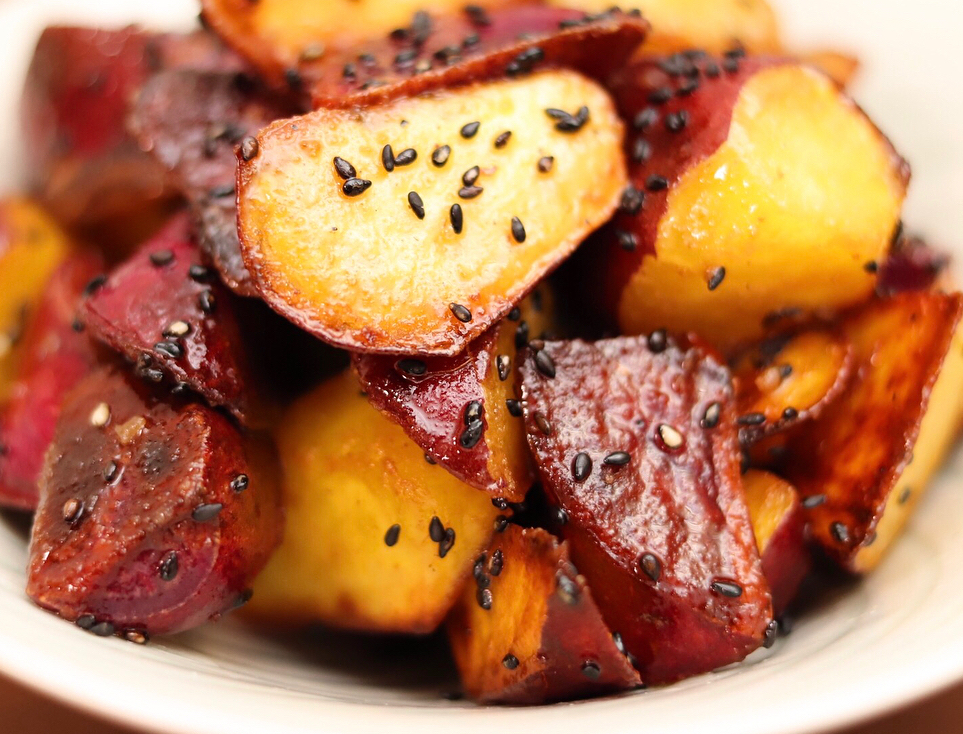
Daigaku Imo (Glazed Sweet Potatoes)
大学芋
Syrup-glazed, black sesame-studded Daigaku (university) imo (potato) first became popular among university students in Japan at the turn of the twentieth century. To learn more about the history of this dish, read my October 2020 newsletter

The flower that blooms from Satsuma imo looks a lot like a morning glory. Only to be expected when you realize that the plant is genus Ipomoea, commonly known as morning glories. (Yams, by the way, are tubers, members of the Dioscoreaceae family, related to lilies and grasses.) Ipomoea is one of the largest groups of flowering plants in the world.
Satsuma imo are a good source of Vitamin B1 (thiamin that enables the body to use carbohydrates as energy), potassium, and Vitamins A and C. Baked or steamed they are quite low in calories (only 86 calories for 100 grams/3.5 ounces; the potatoes pictured here average 300 grams each). Frying and glazing will of course add calories to any dish, but my version of DAIGAKU IMO (adapted from a popular Japanese TV cooking show) is about 230 calories per portion.
DOWNLOAD Glazed Sweet Potatoes DAIGAKU IMO




